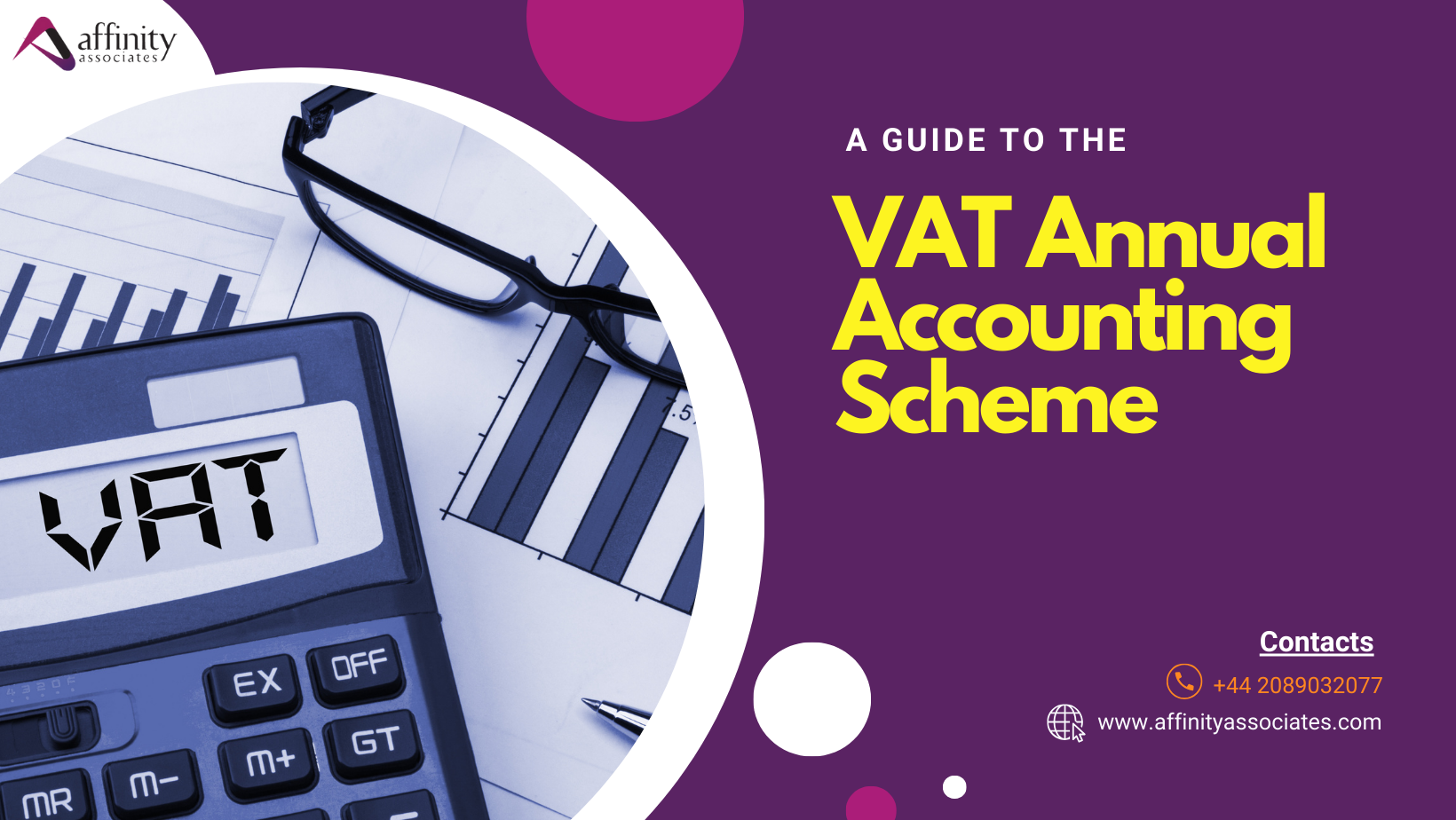
The Value Added Tax (VAT) Annual Accounting Scheme is a valuable tool for simplifying the way businesses handle their VAT responsibilities. For many small and medium-sized enterprises (SMEs), VAT can be a complex and time-consuming affair. However, this scheme offers a streamlined approach that can help businesses reduce administrative burdens and improve cash flow. In this comprehensive guide, we’ll explore the VAT Annual Accounting Scheme and its benefits for businesses in the realm of VAT Services.
What is the VAT Annual Accounting Scheme?
The VAT Annual Accounting Scheme is a voluntary scheme offered by HM Revenue and Customs (HMRC) in the United Kingdom. It’s designed to make VAT accounting more straightforward for eligible businesses. Instead of filing quarterly VAT returns, businesses on this scheme are only required to submit one annual VAT return. This approach significantly reduces the frequency of VAT reporting, which can be particularly helpful for smaller businesses with limited resources.
Eligibility for the VAT Annual Accounting Scheme
Not all businesses are eligible for the VAT Annual Accounting Scheme. To be eligible, your company needs to fulfill specific requirements:
- Your VAT taxable turnover should not exceed £1.35 million in the past 12 months.
- You must be up to date with your VAT payments and returns.
- You should not have been convicted of any VAT-related offenses or have any outstanding tax debts.
If your business meets these conditions, you can apply for the VAT Annual Accounting Scheme.
How Does the VAT Annual Accounting Scheme Work?
Once accepted into the scheme, here’s how it operates:
Submission of Annual VAT Return: Instead of quarterly returns, you’ll submit one annual VAT return. The deadline for this return is two months after your annual accounting period ends.
Advance Payments: The scheme requires you to make advance payments towards your annual VAT liability. These payments are typically made in monthly or quarterly installments. The exact payment frequency is determined by your specific circumstances.
Reconciliation: At the end of your annual accounting period, you’ll complete your annual return, reconciling your advance payments against your actual VAT liability for the year. If you’ve overpaid, you’ll receive a refund, and if you’ve underpaid, you’ll need to make the additional payment.
Benefits of the VAT Annual Accounting Scheme
Reduced Administrative Burden: For businesses that find quarterly VAT returns time-consuming and administratively challenging, the annual scheme can be a game-changer. It simplifies the process by reducing the number of returns you need to submit.
Cash Flow Improvement: The advance payments under the scheme are based on your previous year’s VAT liability. This can help smooth out your cash flow, as you’ll have a more predictable monthly or quarterly payment to make.
Easier Budgeting: With regular, predictable payments, budgeting becomes more manageable. It’s easier to allocate resources for VAT payments, reducing the risk of cash flow issues.
Lower Risk of Penalties: Missing VAT return deadlines can result in penalties and interest charges. With just one annual return, the risk of missing deadlines is significantly reduced.
More Time for Business Growth: The reduced time spent on VAT compliance allows business owners to focus on other critical aspects of their operations, such as growth and customer service.
Potential Drawbacks and Considerations
While the VAT Annual Accounting Scheme has many benefits, it’s essential to consider potential drawbacks:
Advanced Payments: If your business experiences a sudden increase in sales, you may end up making advanced payments that don’t accurately reflect your current VAT liability.
Rigid Schedule: You must adhere to the payment schedule, which may not be suitable for all businesses, especially those with irregular cash flow.
Year-End Reconciliation: The reconciliation process at the end of the year may require a more significant lump-sum payment if you’ve underestimated your VAT liability.
Applying for the VAT Annual Accounting Scheme
To apply for the VAT Annual Accounting Scheme, you need to complete and submit VAT600AA to HMRC. You can apply for the scheme when you register for VAT or during your VAT registration.
Conclusion
The VAT Annual Accounting Scheme offers a simplified approach to VAT compliance that can benefit many small and medium-sized businesses. By reducing the administrative burden, improving cash flow, and making budgeting more manageable, this scheme provides a valuable tool for businesses in need of VAT services. However, it’s crucial to weigh the benefits against Potential Drawbacks and consider your specific business needs before deciding whether the scheme is right for you. For eligible businesses, the VAT Annual Accounting Scheme is a strategic step toward streamlining VAT management and fostering growth. To know more about accounting and VAT services, follow us on social media.
